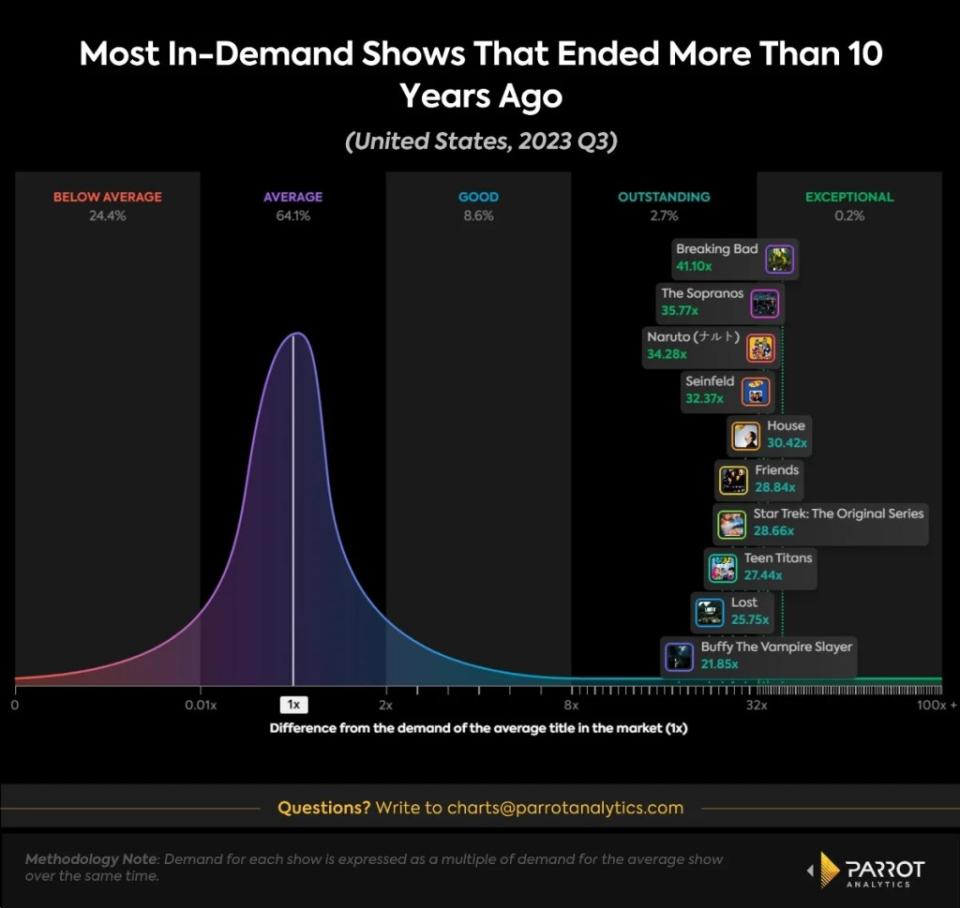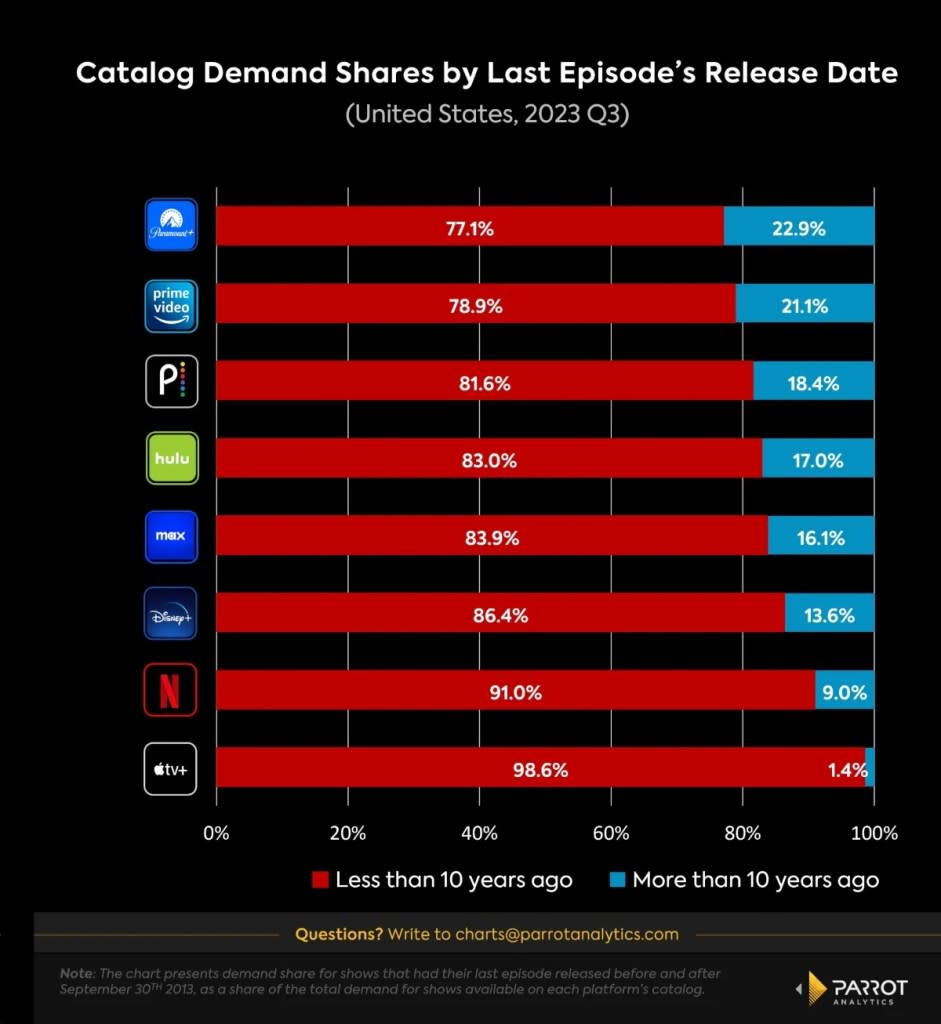10 Most In-Demand TV Shows That Ended More Than a Decade Ago | Charts
The Lindy Effect states that the longer non-perishable entities — like technologies or ideas — have existed, the more likely they will continue to exist. When applied to cultural phenomena such as TV shows, this suggests that if a show has maintained popularity for 10 or 20 years, it’s likely to remain relevant for another 10 or 20 years.
Such enduring shows, often called “legacy content,” typically have a significant cultural impact both in the U.S. and internationally. Examples include AMC’s “Breaking Bad” and HBO’s “The Sopranos” — two highly acclaimed TV dramas that are the most in-demand TV shows that ended more than 10 years ago. “Breaking Bad” is the cornerstone of a long and lucrative partnership between Netflix and series producer Sony. These shows are followed by the Japanese anime “Naruto,” which is renowned as one of the most popular anime ever.
Interestingly, this trend also includes certain comedy and comedy-drama series. Sitcoms like “Seinfeld,” “Friends,” and the medical dramedy “House” maintain high demand levels, thanks to their rewatchable qualities and large fan bases. These shows are responsible for streaming platforms spending considerable money on licensing. Netflix acquired the worldwide streaming rights for “Seinfeld” for upwards of $500 million, while WBTV shelled out $425 million for the U.S. streaming rights to “Friends.”

In the context of streaming platforms, these legacy shows represent a significant portion of viewer demand. For instance, Paramount+ sees over one-fifth of its TV catalog demand coming from shows that ended more than 10 years ago, largely due to the popularity of the Star Trek franchise. The platform has five “Star Trek” shows in its catalog that initially aired on broadcast. That includes “The Original Series,” one of the most popular legacy titles in the U.S. On the other hand, Apple TV+ is an exception to this trend.

Streaming services benefit greatly from including these shows in their catalogs. They not only help retain subscribers but also provide viewers with familiar content to enjoy between new releases. Platforms with a substantial amount of licensed content, like Amazon Prime Video and Hulu, are particularly keen on acquiring such legacy shows, which can develop multi-generational fandoms.
For example, Prime Video hosts three of the top 10 most in-demand legacy shows: “Naruto,” “House,” and “Teen Titans,” along with other classics like “Stargate SG-1” and “Mr. Bean.” Hulu offers “Lost” and “Buffy the Vampire Slayer.”
Peacock, another platform with a high demand share for legacy shows, capitalizes on NBC’s extensive legacy library, featuring long-running series like “Columbo” and the 1989 sci-fi series “Quantum Leap.”
Legacy content plays a crucial role in the long-term strategies of streaming platforms by sustaining audience engagement. However, it is important to note that older legacy content doesn’t guarantee that a show will always have a higher demand than the newer hit show released in that quarter. Instead, the consistency of its elevated demand levels over time is a considerable achievement and pays off in the long run.
Daniel Quinaud is a senior data analyst at Parrot Analytics, a WrapPRO partner. For more from Parrot Analytics, visit the Data and Analysis Hub.
For all of TheWrap’s Hollywood strike coverage, click here.
The post 10 Most In-Demand TV Shows That Ended More Than a Decade Ago | Charts appeared first on TheWrap.

 Yahoo News
Yahoo News 
